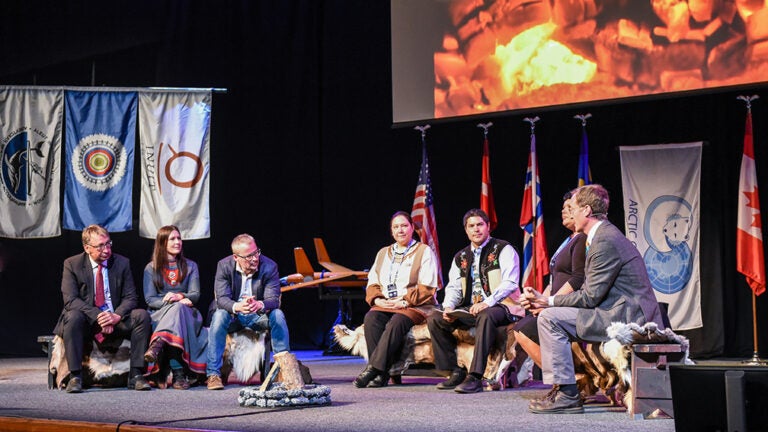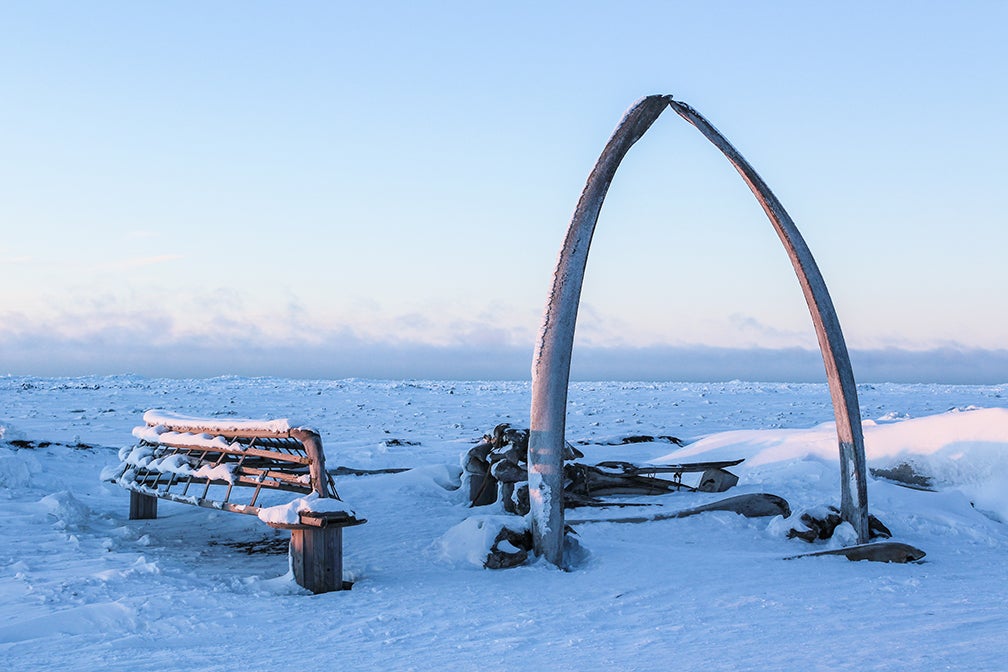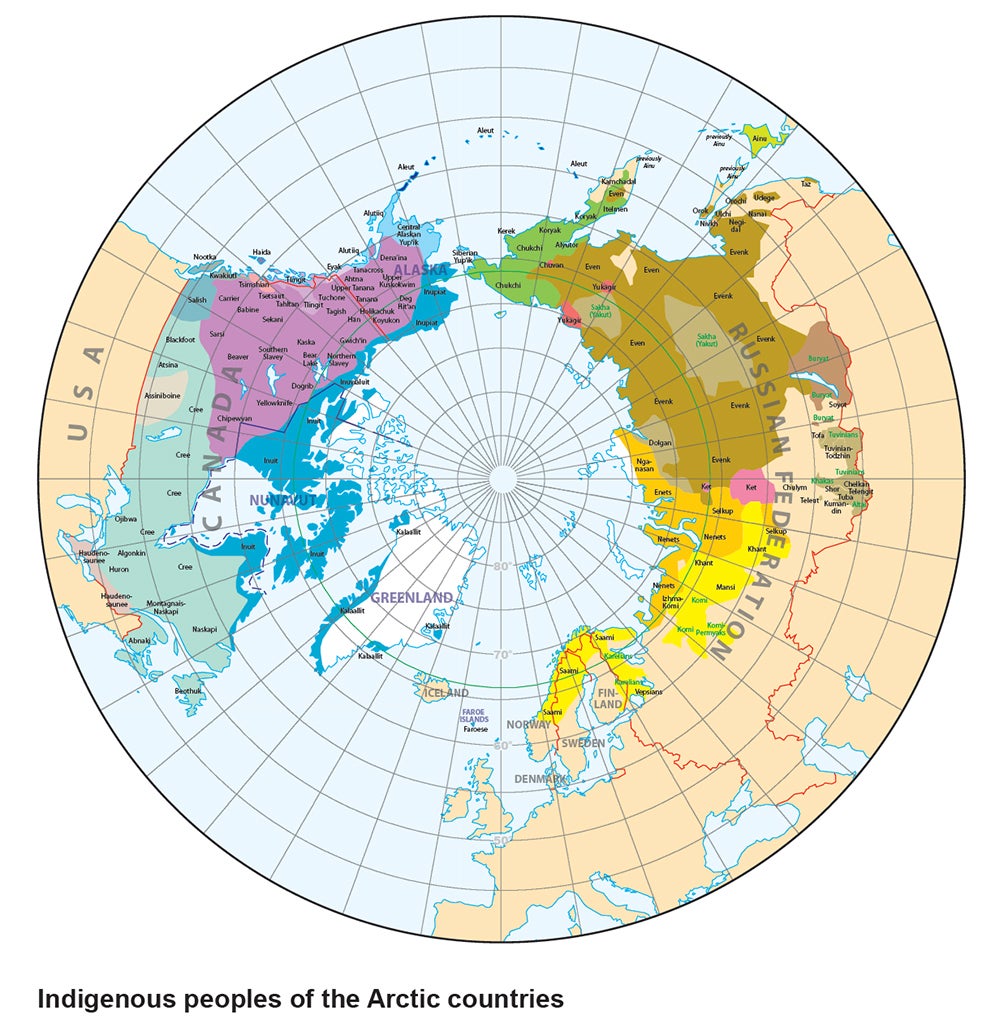
Indigenous Knowledge Roundtable during the 10th Ministerial Meeting of the Arctic Council in Fairbanks, Alaska, May 2017. Credit: Arctic Council Secretariat / Linnea Nordstom
Arctic Indigenous Peoples and Communities
The indigenous peoples of the Arctic, those who live north of the Arctic Circle (66.3o North Latitude) are in another world from those of us who live 1000 miles south, say, at a mere 55o (which is about the latitude of Glasgow, Scotland; Moscow; Copenhagen or Malmö, Sweden). Harsh weather conditions, sparse vegetation, small and often isolated communities, ancient customs and sophisticated knowledge of the environment characterize these peoples. A culture based on seagoing transport and hunting skills has refined in these communities a deft understanding of the seasonal changes in nature and how those changes can be utilized, maintaining lives far different from our own.
Survival for these indigenous peoples: the Inuit, Dene, Aleut, Yupik, Saami, Chukchi, Nenets, Khanty, Evenk, is dependent upon their knowledge of a sparsely populated land that lies far away from the balance of the world’s population, yet the environmental changes wrought by a changing climate from activities worldwide affect them as well. In fact, the Arctic has just had its warmest winter on record and lowest level of sea ice coverage. Our understanding of the ways of indigenous peoples is important because actions taken in the temperate and tropical zones of our climate affect them as much as it changes our ways of living.
A simple understanding of geography is enough to convince us that the residents of Arctic lands face dramatic challenges both within their own communities and in their interactions with temperate climate communities (the South). For example, providing education and health care for isolated communities is difficult and expensive, especially when trying to provide the same level of care as in population centers of the South. A rapidly growing population demands employment and yet more traditional industrial occupations are scarce. Even for products uniquely produced in the Arctic the simple costs of transportation to population centers of the South, as a means of generating an export economy, must face daunting costs of transportation and if non-indigenous raw materials are required from the South, those costs are multiplied. How will a warmer climate affect transportation access and costs, both in terms of industry and tourism?
Governance of indigenous communities is complicated when government policies fail to adequately recognize traditional methods of governing. Moreover, attempts to provide government services can miss their intended objectives by simple ignorance of traditional values of societies that have lived for eons at the edge of the Arctic oceans.
Yet with a changing climate and a sense of responsibility and political cooperation from the South, organizations including the United Nations and now the Arctic Council, which includes representatives from all Arctic nations (Russia, Finland, Sweden, Norway, Denmark, Iceland, Canada and the US as well as representatives of indigenous peoples) are undertaking a serious effort to both understand Arctic culture and mores and also to provide interventions that are culturally sensitive and effective in assisting our fellow citizens in adjusting to the challenges brought about by a changing climate.
The 2018 Arctic Conference provided a forum where these ideas could be discussed. Learn more about the conference.

